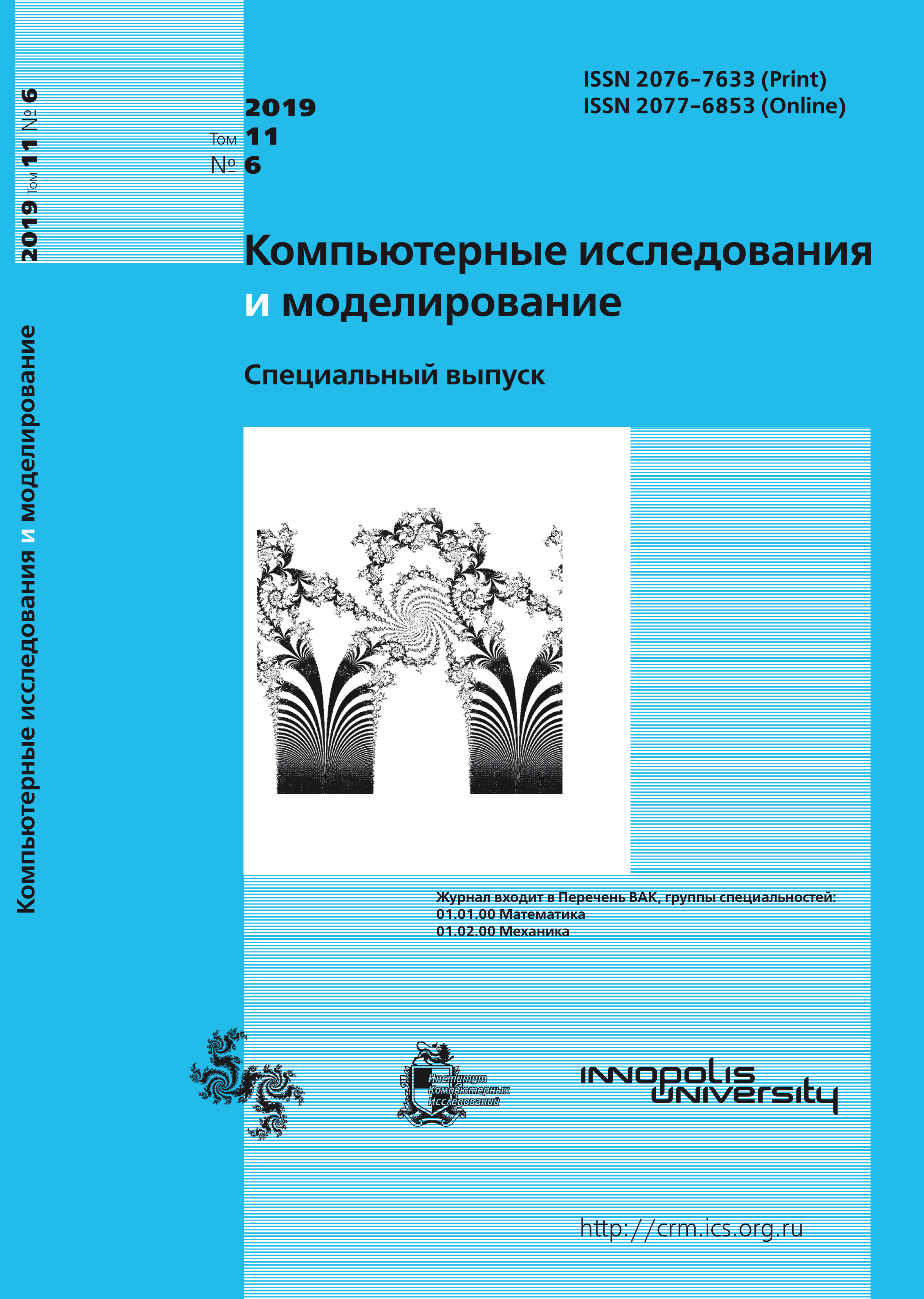Все выпуски
- 2025 Том 17
- 2024 Том 16
- 2023 Том 15
- 2022 Том 14
- 2021 Том 13
- 2020 Том 12
- 2019 Том 11
- 2018 Том 10
- 2017 Том 9
- 2016 Том 8
- 2015 Том 7
- 2014 Том 6
- 2013 Том 5
- 2012 Том 4
- 2011 Том 3
- 2010 Том 2
- 2009 Том 1
Application of mathematical fracture models to simulation of exploration seismology problems by the grid-characteristic method
 pdf (4299K)
pdf (4299K)
In real problems of exploration seismology we deal with a heterogeneity of the nature of elastic waves interaction with the surface of a fracture by the propagation through it. The fracture is a complex heterogeneous structure. In some locations the surfaces of fractures are placed some distance apart and are separated by filling fluid or emptiness, in some places we can observe the gluing of surfaces, when under the action of pressure forces the fracture surfaces are closely adjoined to each other. In addition, fractures can be classified by the nature of saturation: fluid or gas. Obviously, for such a large variety in the structure of fractures, one cannot use only one model that satisfies all cases.
This article is concerned with description of developed mathematical fracture models which can be used for numerical solution of exploration seismology problems using the grid-characteristic method on unstructured triangular (in 2D-case) and tetrahedral (in 3D-case) meshes. The basis of the developed models is the concept of an infinitely thin fracture, whose aperture does not influence the wave processes in the fracture area. These fractures are represented by bound areas and contact boundaries with different conditions on contact and boundary surfaces. Such an approach significantly reduces the consumption of computer resources since there is no need to define the mesh inside the fracture. On the other side, it allows the fractures to be given discretely in the integration domain, therefore, one can observe qualitatively new effects, such as formation of diffractive waves and multiphase wave front due to multiple reflections between the surfaces of neighbor fractures, which cannot be observed by using effective fracture models actively used in computational seismology.
The computational modeling of seismic waves propagation through layers of mesofractures was produced using developed fracture models. The results were compared with the results of physical modeling in problems in the same statements.
Copyright © 2019 Муратов М.В., Петров И.Б.
Журнал индексируется в Scopus
Полнотекстовая версия журнала доступна также на сайте научной электронной библиотеки eLIBRARY.RU
Журнал входит в систему Российского индекса научного цитирования.
Журнал включен в базу данных Russian Science Citation Index (RSCI) на платформе Web of Science
Международная Междисциплинарная Конференция "Математика. Компьютер. Образование"







